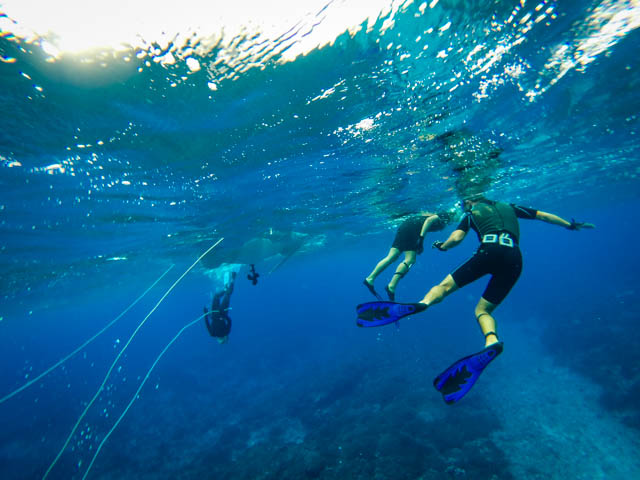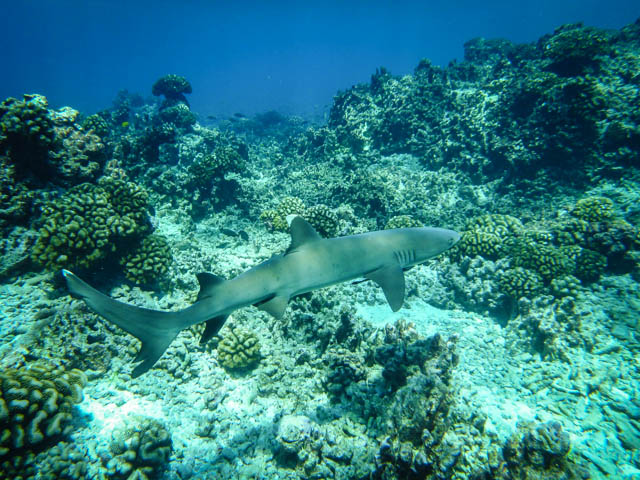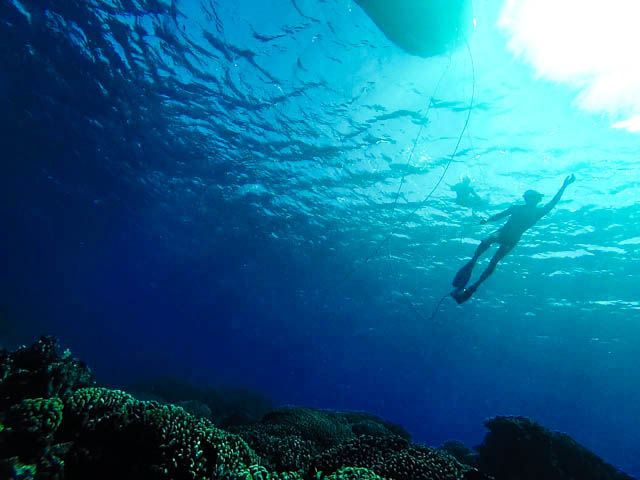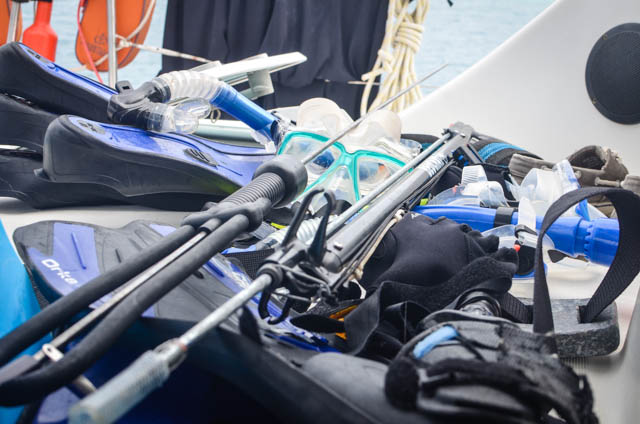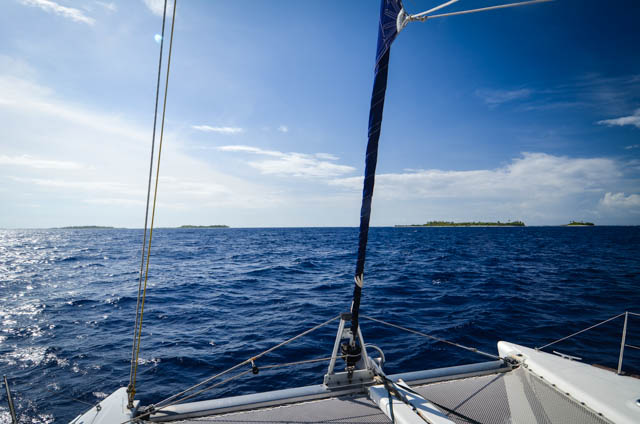Author: Pete
Location: Bora Bora, Society Islands
Date: July 13th – 19th, 2015
Motored out of Passe Paipai before sunrise in flat water leaving Taha’a in our wake on our twenty mile passage to what is reportedly the most beautiful island in the world. We got complacent with the flat seas and had a horrific accident just outside the pass, completely destroying THE most important piece of equipment on the boat: the French Press. NOOOOO!!! Left it sitting on the table and ran right through a ferry’s heavy wake. We weren’t sure how we’d make it the next 19 miles to Bora Bora uncaffeinated, but somehow we got through it, despite steering by hand.



Bora’s twin peaks on a central masiff rises sharply from sprawling fingers of the island. All around the island is a ring of taller motu just inside a reef. The lagoon between the island and the motu is deep and dark, and the outer lagoon is bright, clear and shallow.
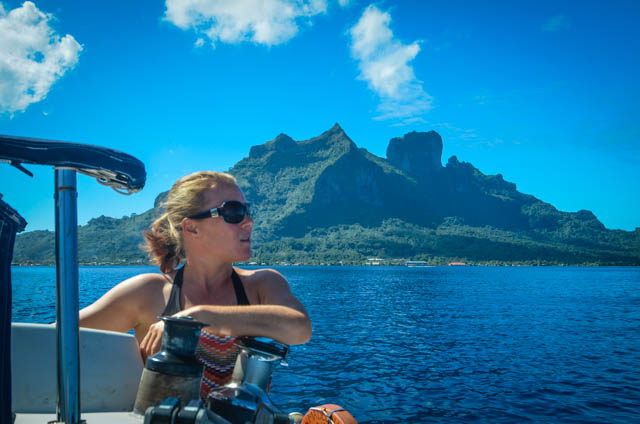
We motored south through the lagoon then around the inner island of Toopua where we anchored in seven meters of clear sand as far as the eye could see and the kind of electric blue water that makes you pinch yourself and grin like and idiot. I was in the water almost before the anchor.



Took the dinghy over to the pass just south of Toopua to check out a drift dive we’d heard about. Clouds of fish greeted us, looking for hand-outs, but unfortunately I’d left my bread and multiplication worksheets back on the boat. We drifted along the pass and spotted a spotted eagle ray, then two together, then four in a group, then FIFTY in a swarm! They are usually solitary so they may have been mating. As we watched them a fifteen foot manta ray winged past us. Of course the camera was dead for this round, so you’ll have to take my spotty word on it.
It had been a rough day, what with missing pictures of the spectacular rays and the looming prospect of a morning without proper coffee so we rinsed off back at the boat and made a couple margaritas with our contraband tequila. Sat on the trampoline alone in the lagoon and played guitar. The night was so bright and the lagoon so calm you could see the reflection of the Milky Way in the water. Looked like the bright band dove into the sea and swam up to the boat. What a place.

The next day we went back and snorkeled the same spot armed with the camera. Eagle rays showed up, but not in the number of the previous day. No mantas though. Wah wah.





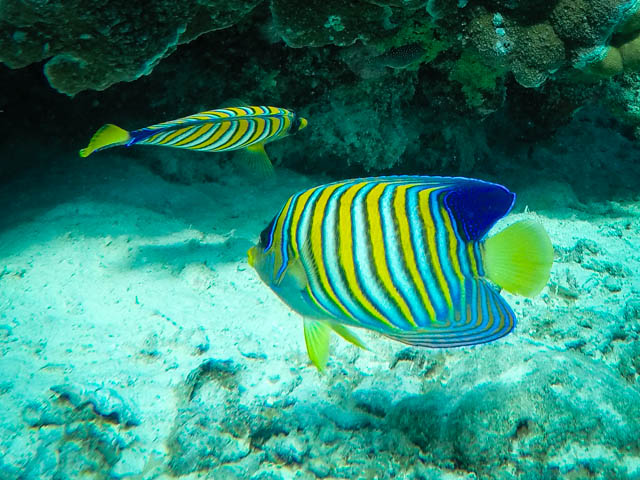

A few days of enjoying the lagoon and it was back to some business. We picked up our much awaited part, which necessitated a two-mile dinghy ride to the airport on an outer motu. Pretty cool to be able to dinghy up to an airport though. Installed the part and tested out our autohelm. Looks like we’re in business. Welcome back Otto! Now get to work!




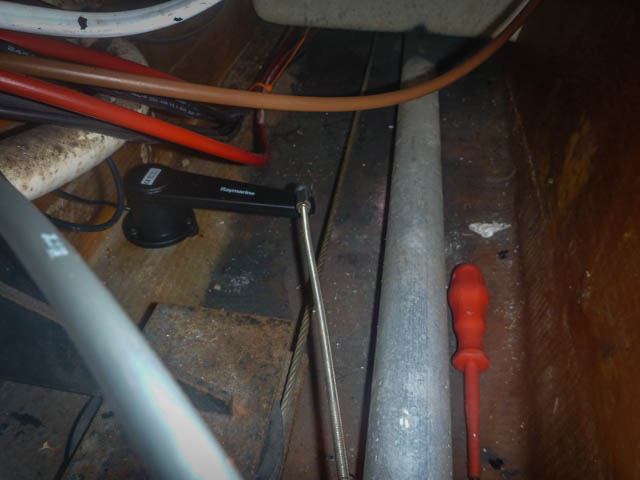
The outer islands of Bora Bora are unreal. The lagoon is otherworldly blue and the motu are packed with luxury hotels masquerading as bungalows. The main island is home to regular local folk. The streets are dirt, the town is small and rough around the edges. It’s an interesting juxtaposition.






Looked at our itinerary and decided we better get moving. We’ve been three months in French Polynesia! We’re planning on heading from Bora Bora straight to Tonga with a possible stop in Nuie if weather permits. So we’re anchored off the little town getting the boat in passage making shape. We fueled, watered, provisioned, cooked meals, changed oil, and the like. It’ll be twelve days across to Tonga and we’ve been spoiled by the short-hops afforded by French Polynesia. To give you some perspective, sailing the 1200 miles from Bora to Tonga will be like traveling from Minneapolis to Miami at a brisk walking pace for two weeks. Maybe a jog if the winds are favorable. Wish us luck.
Bye-bye French Polynesia!
For folks who’d like a perspective on the distances we’ve covered here, this map overlays the country on top of a map of Europe. Pretty neat. Red = our trip aboard Tayrona.
















